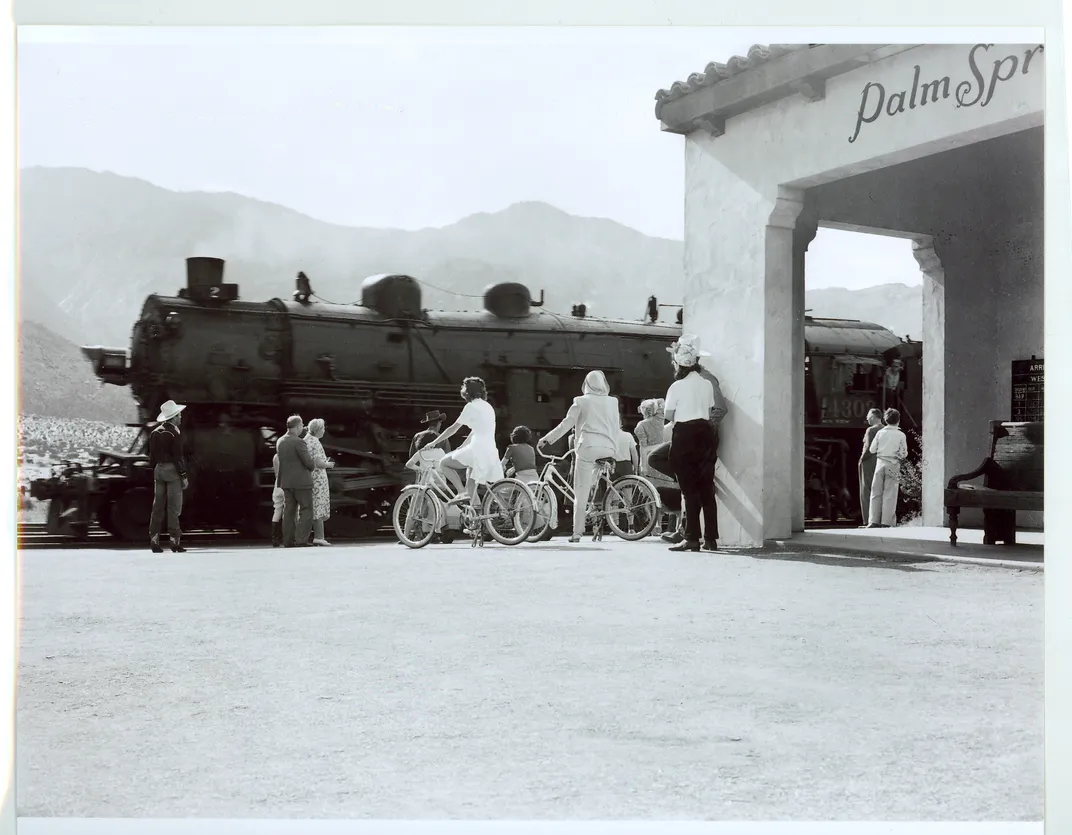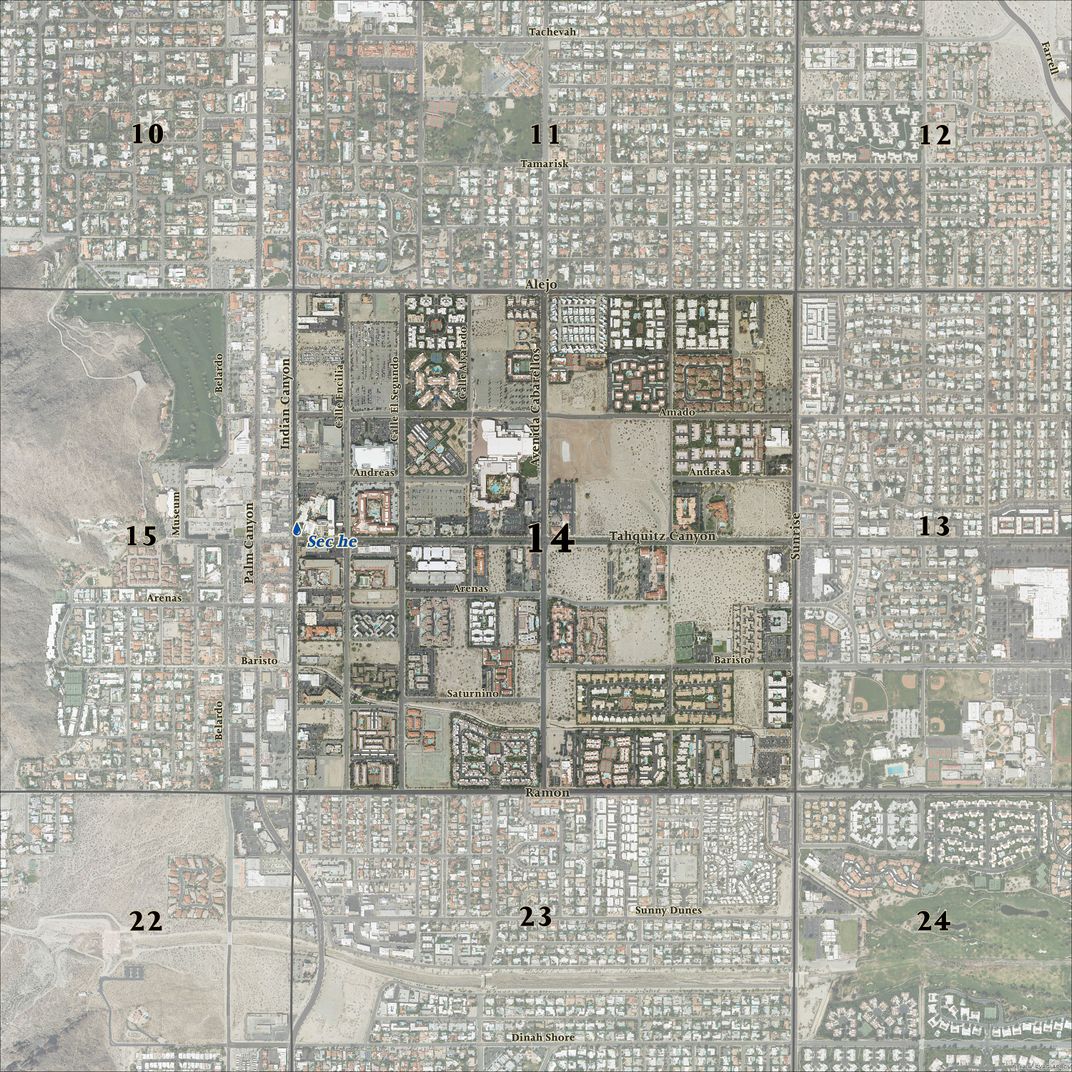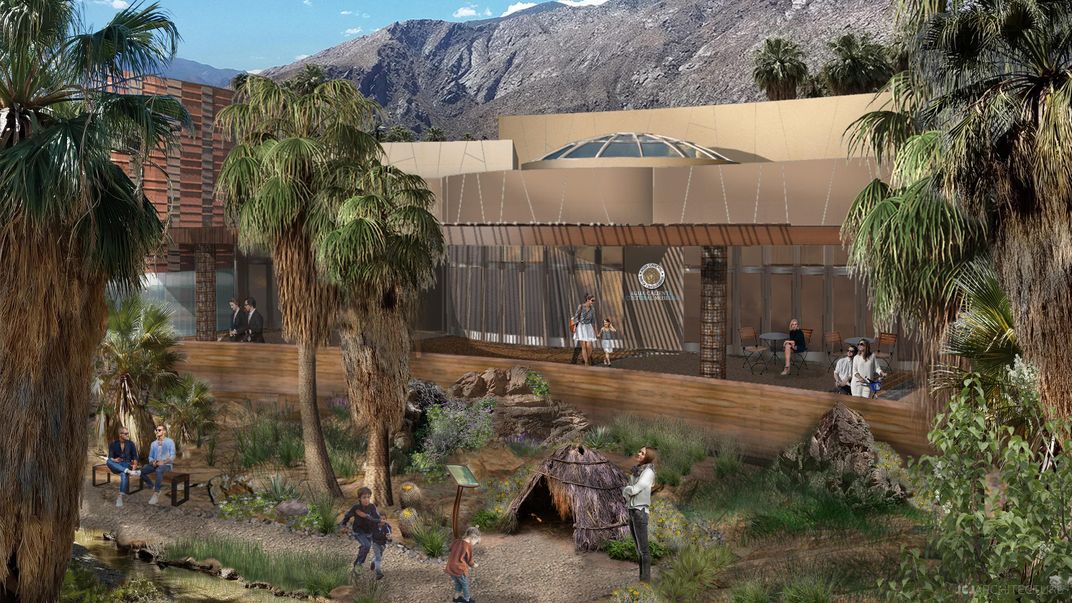How the Agua Caliente Band of Cahuilla Indians Held On in Palm Springs
The one-mile square area, known as Section 14, competes for sovereignty with the wealthy in Southern California
/https://tf-cmsv2-smithsonianmag-media.s3.amazonaws.com/filer/b8/1e/b81e36b5-a312-4d9a-a30f-3ae013bc13dd/gettyimages-661610694.jpg)
When the Southern Pacific Railroad was built across the Sonoran Desert in California, just a dozen years after the Gold Rush, the government divided the land of the Agua Caliente Band of Cahuilla Indians into an odd pattern—a checkerboard of squares.
Even numbered parcels went to the tribe, who had dwelled in the Coachella Valley for thousands of years; odd ones to the railroad, to entice workers and new settlers.
The one-mile square, known as Section 14, happened to contain the unique, 102-degree hot springs that gave the Agua Caliente its name, and was “a happy accident,” says Jeff L. Grubbe, tribal chairman. But it was also right in the middle of what became a booming playground for the rich, the Southern California resort town of Palm Springs.
The fevered efforts of developers, corporations and town officials to gain control of that valuable plot over the years is the basis of a new exhibition at the Smithsonian’s National Museum of the American Indian in Washington, D.C. In pictures, timelines and dashed plans, “Section 14: The Other Palm Springs, California” tells the story of the Agua Caliente reservation’s battles over decades for tribal sovereignty amid issues of land zoning, economics and race.

It’s also a story told by the tribe itself, a product of the Agua Caliente Cultural Museum, a Smithsonian Affiliate, which is currently being rebuilt on the section of land in question, and readying for a 2020 opening, right next to the Palm Spring Walk of Stars.
“It’s an unexpected story—and that’s one of the reasons we were interested in bringing it to Washington,” says David Penney, the associate director for museum scholarship, exhibitions and public engagement. At the same time, he adds, it fits in with the museum’s ongoing exhibition, “Nation to Nation: Treaties Between the United States and American Indian Nations.”
Section 14 was originally set aside by an Executive Order of President Ulysses S. Grant in 1876. A year later, President Rutherford B. Hayes extended the reservation to even numbered sections over three townships, leaving the odd-numbered plots for newcomers.
“Of all the pieces to get pushed on, at least it was on that piece,” Grubbe says. “The big hot spring was on that Section 14. That’s kind of like where our creation story starts.” Grubbe says he’s sure the government didn’t realize how valuable that piece would become.

“This is a very unique area, up against the mountains and with the palms and the canyons and the water falling,” he says. “It just took off, and more and more and more people keep coming.”
Still, Penney says, “because it was federal land, native land, the municipality of Palm Springs which grew up around it, didn’t zone it. They didn’t offer it any services, and as a result, as the resort grew, many of the low-income employees or low-income laborers settled in the Section 14 area because it was cheaper.”
“Our people were living on dirt, basically, and there’s all this development going up and around us except for on that square mile,” Grubbe says. “It was rough. The living conditions not great by no means.”
Growth continued through the mid-20th century when the city, desperate to redevelop valuable plots, began to try and enforce zoning ordinances and construction requirements on the buildings in Section 14, Penney says. “There are these stories of people going off to work and coming back, finding homes bulldozed. Or the fire department setting fires or letting fires burn out of control. It was a bad situation.”

“There was a lot of racial tensions,” Grubbe says. “The rich were pushing on the poor.”
Eventually, Penney says, “the tribe developed its own planning initiative, and they spent a lot of time in the courts, sorting that out.”
The key was finding that those old treaties are not artifacts of the past but the “foundation of American sovereignty in a modern sense, and American law,” Penney says. “Particularly since the 1950s and ‘60s, tribes have been very successful in pursing their treaty rights in courts.”
“It took a long time,” Grubbe says. “It was just constantly butting heads, and the tribe through good leadership were finally able to work with the city and having new elected officials on the city realizing that they should work with the tribe and respect the tribe, I think that’s what finally broke down those barriers.”
“Our visitors are often surprised to find that treaties are still active today,” Penney says. “We’re constantly reminding our visitors that American Indians are very much a part of the United States today, in ways that are perhaps unexpected, as vibrant, sovereign communities within the governmental structure of the United States—where you have municipal governments, state governments, the federal government and you also have tribal governments.”
Since 1977, the Agua Caliente and the city have been working under a land-use contract in which the tribe administers its own lands, and the two entities work together. “Today, there’s more of a mutual respect with one another,” Grubbe says. “We know if the city is doing well, the tribe is going to benefit, and if the tribe is doing well, the city’s going to benefit too.”
The museum’s director Kevin Gover calls the Section 14 exhibit, created by the Agua Caliente Cultural Museum, “a compelling story in the battle for tribal rights, exemplifying the long and ongoing conflict in the West between non-Indian economic ambitions and the rights and authorities of the Indian Nations.”
“Section 14: The Other Palm Springs, California” continues at the National Museum of the American Indian in Washington, D.C., through January 2020, when it will return in 2020 to the Agua Caliente Cultural Museum, a Smithsonian Affiliate.
/https://tf-cmsv2-smithsonianmag-media.s3.amazonaws.com/accounts/headshot/RogerCatlin_thumbnail.png)
/https://tf-cmsv2-smithsonianmag-media.s3.amazonaws.com/accounts/headshot/RogerCatlin_thumbnail.png)